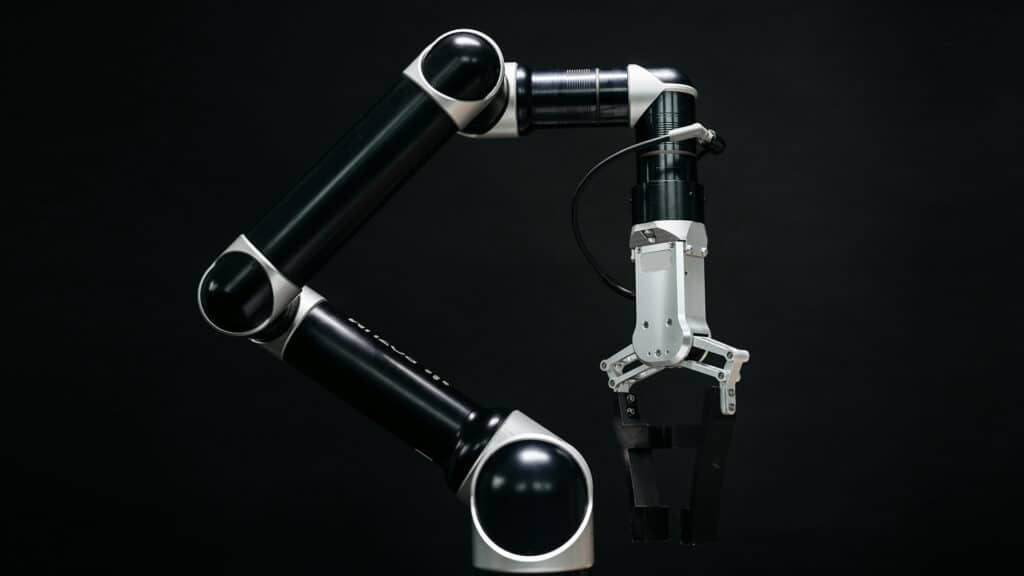Analyst(s): Olivier Blanchard
Publication Date: October 7, 2024
Last month, Ford Motor Company announced a major shift in its electrification strategy, broadening its lineup to include more affordable electric commercial vans, mid-sized trucks, and hybrid SUVs. The plan includes a realigned battery-sourcing strategy to reduce costs and boost capital efficiency, with new models slated for release starting 2026. This shift reflects Ford’s focus on sustainability, profitability, and giving customers greater EV choices.
What is Covered in this Article:
- Ford’s new electrification strategy targeting commercial vans, pickup trucks, and SUVs
- Realignment of battery sourcing to reduce costs and capitalize on tax incentives
- Introduction of hybrid SUVs for larger vehicles
- Plans for a new cost-efficient electric vehicle platform launching in 2027
- Retiming of the next-gen electric truck, “Project T3”
The News: Ford announced a significant expansion of its electrification strategy last month. The company revealed plans to focus on commercial electric vans, mid-size pickup trucks, and hybrid three-row SUVs as part of a capital-efficient and profitable EV rollout. Production of a new commercial van is scheduled for 2026, with two new electric pickup trucks to follow in 2027.
Additionally, Ford will realign its battery sourcing strategy in the U.S., moving production closer to home to leverage cost efficiencies and Inflation Reduction Act tax credits. These moves will help Ford provide lower-cost electric vehicles while continuing its push for sustainability and CO2 reduction.
Ford’s Broadened EV Strategy with Focus on Profitability and New Models
Analyst Take: Ford’s expanded strategy underscores its dual goals of profitability and sustainability as it refines its approach to the promising but challenging electric vehicle market. The decision to prioritize hybrid technologies in specific segments—such as large SUVs—reflects a practical understanding of current battery cost limitations and customer needs.
By tapping into its strengths in commercial vehicles and leveraging U.S.-based battery production, Ford is positioning itself to compete aggressively in the next wave of EV growth. However, the success of this strategy will depend on how well the company manages the pricing pressures and competitive dynamics in a market where both legacy automakers and new entrants are vying for dominance.
A Customer-Centric Approach to Electrification
One of the primary takeaways from the announcement is Ford’s determination to broaden its EV offerings, especially in sectors where it already has a competitive edge. According to the press release, Ford’s next-generation electrified lineup will primarily target commercial vans, mid-size and large pickup trucks, and long-range SUVs. This strategic focus reflects Ford’s understanding that these vehicle segments—due to their utility and versatility—are key areas where customers expect more from their EVs. It also speaks to Ford’s confidence in the growth of electrification infrastructure that will effectively serve these vehicles.
Jim Farley, Ford’s President and CEO, emphasized the lessons learned from being the second-largest EV brand in the U.S., noting the company’s focus on providing the best value for customers. Farley stated, “We learned a lot as the No. 2 U.S. electric vehicle brand about what customers want and value, and what it takes to match the best in the world with cost-efficient design.”
With the evolving needs of EV consumers—who are now more cost-conscious and focused on long-term savings—Ford is tailoring its electric vehicle offerings to meet this shift. As electric vehicles become mainstream, early adopters’ priorities such as novelty give way to practical concerns such as fuel savings, lower maintenance costs, and charging convenience. Ford aims to cater to these more practical demands by delivering electric models with competitive pricing, extended driving ranges, and advanced digital customizations.
Commercial Vehicles Leading the Charge
Ford’s expanded EV strategy will take a significant leap forward in 2026 by introducing an all-new, digitally advanced commercial van. This vehicle will be produced at Ford’s Ohio Assembly Plant and represent a pivotal move to strengthen the company’s already dominant position in the commercial EV sector. The E-Transit, Ford’s best-selling electric van in the U.S., is the cornerstone of its commercial EV lineup. It has seen widespread adoption among businesses of all sizes due to its total cost of ownership benefits and productivity enhancements.
Following the new commercial van’s debut, Ford plans to roll out two new pickup trucks in 2027. These will include a mid-size truck designed by Ford’s innovative California skunkworks team and a next-generation truck, which will be assembled in Tennessee. Both trucks are expected to offer extended range, lower costs, and customizable digital experiences—key factors that Ford hopes will set its vehicles apart in the highly competitive EV market.
Ford’s commercial EV segment acceleration also reflects the momentum of Ford Pro, the company’s commercial-customer-facing business. Beyond providing commercial customers with best-in-class purpose-built EVs, Ford Pro is also leveraging a rich menu of built-in technology solutions to provide customers with a wide range of capabilities, from fleet management to individual vehicle monitoring. Ford Pro’s services have proven extremely popular since they started rolling out just a few quarters ago, with subscriptions already driving strong revenues and healthy sequential growth for the group.
Reducing Costs with Advanced Battery Sourcing and Hybrid Options
One of the most critical components of Ford’s updated electrification strategy is the realignment of its U.S. battery sourcing. As Farley emphasized, “An affordable electric vehicle starts with an affordable battery.” To achieve this, Ford is working on reducing the cost of its electric vehicles by improving battery sourcing efficiency and localization.
The company plans to source Mustang Mach-E batteries from Holland, Michigan, starting in 2025. This move aims to take advantage of the Inflation Reduction Act (IRA) benefits, including tax credits. Additionally, Ford’s BlueOval SK joint venture in Kentucky will produce new battery cells for the E-Transit van and the F-150 Lightning in 2025. Furthermore, the BlueOval City plant in Tennessee will manufacture cells for the latest electric commercial van slated for production in 2026 and future electric trucks.
In a noteworthy shift, Ford is also turning to hybrid technologies for its upcoming three-row SUVs. The decision stems from the realization that, for larger vehicles, the current cost of pure electric batteries remains a challenge. By incorporating hybrid technologies, Ford can offer enhanced fuel efficiency, increased range for road trips, and reduced emissions without the high costs associated with fully electric alternatives.
Introducing a mix of propulsion options is not just about consumer choice but is also part of Ford’s broader goal to improve profitability. By leveraging hybrid solutions and carefully managing its investment in pure electric vehicles, Ford plans to reduce its annual capital expenditure on EVs from 40% to 30% while ensuring that all new models generate positive earnings before interest and taxes (EBIT) within the first 12 months of their launch.
A Major Step Forward in EV Development
At the heart of Ford’s EV development is a new low-cost, high-efficiency electric vehicle platform designed by the company’s skunkworks team in California. This platform represents a radical rethinking of how Ford designs, engineers, and manufactures electric vehicles. With a systems-integration approach, the team aims to minimize complexity while maintaining the high standards that have long been associated with the Ford brand.
The first vehicle built on this platform will be a mid-sized electric pickup, set to launch in 2027. This truck will cater to cost-conscious customers looking for more range, utility, and overall value. Ford’s vision for this platform extends beyond just trucks; it is designed to be flexible enough to underpin multiple vehicle styles, from retail to commercial applications. Additionally, the platform will offer highly personalized digital experiences, leveraging Ford’s best-in-class features, such as BlueCruise and Ford Pro Telematics, allowing continuous updates and service enhancements over time.
This development is expected to drive Ford’s shift toward software-based revenue streams. By increasing the installed base of software-enabled vehicles, Ford anticipates higher margins from recurring revenue sources, further contributing to the company’s long-term profitability.
Future-Proofing Ford’s Truck Lineup
Another highlight of Ford’s electrification announcement is retiming its next-generation electric truck, code-named “Project T3.” Originally slated for an earlier release, the truck will launch in late 2027, taking advantage of lower-cost battery technology and other innovations. This strategic delay allows Ford to gather valuable insights from F-150 Lightning customers and refine the truck’s design and features.
The T3 truck will be assembled at the Tennessee Electric Vehicle Center, part of Ford’s sprawling BlueOval City complex. It promises to bring several groundbreaking features to the market, including bidirectional charging capabilities and advanced aerodynamics, further solidifying Ford’s leadership in the electric truck sector.
Ford is also committed to offering electrification choices across its truck lineup, including hybrids. For instance, the next-generation F-Series Super Duty pickup will offer various propulsion options, from hybrid to fully electric. This approach ensures that Ford remains the global leader in pickup trucks while future-proofing its offerings to meet customers’ evolving needs and the regulatory landscape.
Looking Ahead: Profitability, Sustainability, and Customer Choice
Ford’s updated electrification strategy is about more than just launching new electric vehicles; it is about building a sustainable, profitable business that delivers value to customers and shareholders alike. The company is committed to realigning its cost structure, optimizing its battery sourcing and leveraging hybrid technologies to drive long-term growth.
Ford plans to update its electrification progress, including profitability and capital requirements, in early 2025. This will give the market a clearer picture of how Ford’s electrification efforts translate into tangible results for the environment and the company’s bottom line.
Ford’s broadened strategy reflects a deep understanding of customer needs and market dynamics as the electric vehicle market continues to evolve. With a clear focus on cost efficiency, technological innovation, and long-term profitability, Ford is well positioned to lead the next generation of sustainable transportation.
What to Watch:
- Tesla, Rivian, and Chinese automakers are key competitors, particularly in the commercial van and pickup truck segments. Their ability to lower costs and expand globally could impact Ford’s growth trajectory.
- Battery technology and advancements in range and charging speeds will be critical. Innovations from competitors or battery suppliers could either enhance or disrupt Ford’s efforts.
- As pricing pressures increase, it will be important to monitor how Ford adapts its pricing and whether it can continue to lower costs through battery production realignments.
- Businesses looking for fleet electrification options will be key customers. Ford’s focus on lowering total cost of ownership through efficient EVs could help it capture this segment, but other EV makers are making inroads too.
See the complete press release on Ford’s Broadened EV Strategy on the Ford website.
Disclosure: The Futurum Group is a research and advisory firm that engages or has engaged in research, analysis, and advisory services with many technology companies, including those mentioned in this article. The author does not hold any equity positions with any company mentioned in this article.
Analysis and opinions expressed herein are specific to the analyst individually and data and other information that might have been provided for validation, not those of The Futurum Group as a whole.
Other insights from The Futurum Group:
GlobalFoundries Advances Energy Efficiency with Efficient Partnership
DOJ vs. Google: Key Takeaways from the Historic Antitrust Case
Solidigm Showcases AI, Sustainability, and Edge Innovations at The Six Five Summit
Author Information
Olivier Blanchard is Research Director, Intelligent Devices. He covers edge semiconductors and intelligent AI-capable devices for Futurum. In addition to having co-authored several books about digital transformation and AI with Futurum Group CEO Daniel Newman, Blanchard brings considerable experience demystifying new and emerging technologies, advising clients on how best to future-proof their organizations, and helping maximize the positive impacts of technology disruption while mitigating their potentially negative effects. Follow his extended analysis on X and LinkedIn.





